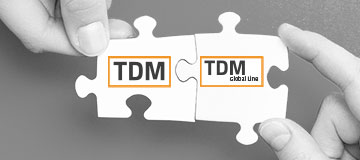Roadmaps for digital transformation
Many machining companies already have roadmaps for digital transformation, with a defined overall route and a target arrival time – determined on the basis of conditions that were current when the map was created. However, it often takes some time before the companies actually set out, i.e. the position and initial situation may have changed.
If we sit in the car on the way from A to B, we are used to being offered several routes by a navigation device or an app: The fastest, the shortest or even the most picturesque. Before starting, we have to decide which factor is the most significant for us and choose accordingly. In the case of digital journeys, this means that companies want to use it to increase productivity or improve adherence to schedules, for example. But even if you have decided on your preferred route, you will still have to be flexible. After all, short-term disruptions on the route are part of everyday life – it is good if there are alternative routes that can be used to circumvent them.
Flexible in the actual implementation
What is a matter of course in driving, namely receiving information in real time and then being able to change the route quickly in response, is far from being a widespread concept in industry. So far, there are no solutions that automatically offer new options. This is precisely the challenge of the digital journey: Unforeseen events may occur that make it necessary to deviate from the planned route – which leads directly to other major challenges that can simultaneously prove to be opportunities: People. Companies that involve their employees in the planning from the beginning and take them on the journey have an advantage over those that "impose" a ready-made solution on their employees. This is because digitization means saying goodbye to old habits. This is often hard enough. If the route then has to be changed several times, it becomes even more difficult to maintain motivation and the will to change. One solution may be to involve the employees from the very beginning, and to plan many short legs with intermediate goals, for which the responsibility also lies with the employees. By planning the digital journey piecemeal, companies can check after each leg whether the route they have chosen is still suitable and, if necessary, turn off and choose the alternative route. Ultimately, this makes them more flexible in the actual implementation.
Once the overall goal is defined, the legs are planned and the staff are on board, it is time to take care of the fuel. There is only one option for digitization: Data. There is more than enough of it in manufacturing companies. They are created at every single link in the process chain, from planning to the finished machined workpiece. But how and where does the data from the many small tanks coalesce so that it is available at the right time and in the right place? With networked solutions like TDM.
TDM Systems - digitization partner for machining companies
For more than a quarter of a century, TDM Systems has been a digitization partner for machining companies – long before Industry 4.0 and digital transformation were on everyone's lips. While TDM's experts know the industry's requirements and specifics inside out, they still look closely at each individual user to see how they can support them in their respective digital journeys and guide them through the individual legs. To do this, they take a look at the entire process chain, advise on process adjustments and collate the information from the various departments. After the individual preparations, every digital journey begins with a decisive measure: The creation of a central database in which the data from all systems involved in production coalesce.
What may sound simple is complex in reality. Simply collecting the data from all existing tools and items is a mammoth task. Data Services or the TDM WebCatalog can help to populate the database – a big relief for companies. This is because the digital journey will only be a success with the right and available data. In any case, not setting out is not an option: The digitization of production can no longer be stopped.




